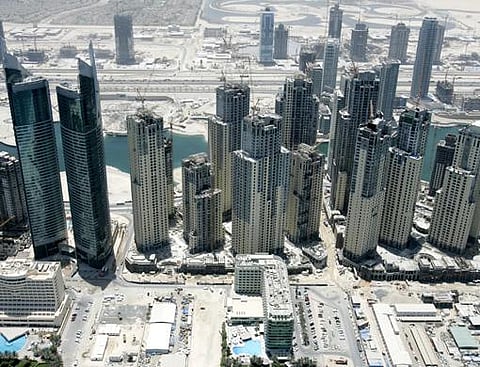Dubai landlords are lowering rents, extending leases to keep tenants
In a bid to keep their apartments occupied, landlords are agreeing to rental reductions, extensions

Dubai: Dennis has been jobless for about three months now and is increasingly worried about drying up his savings to pay the household bills – especially the rent for his one-bedroom flat at an upscale neighbourhood.
When the lease expired last March, the Dubai-based expatriate asked his landlord to let him renew his tenancy for only three months, instead of the standard one year. This is so he didn’t have to fork out Dh105,000 for the rent while no income is coming in, and he’s still unsure whether he should stick around for another year if he can’t find new employment.
It was a relief that the landlord agreed, otherwise, he will have to go through the hassle of moving out. With the extension, he only spent less than Dh30,000. "Hopefully, I could find a job in the next three months,” he said.
According to property analysts, owners of residential flats and villas in Dubai are generally being more flexible than they have been for a long time. They’re not just increasing lease instalments, they’re also extending contracts and lowering rents, in a bid to keep their units occupied amid a sluggish market.
“With rental rates still falling almost universally, landlords are becoming noticeably more flexible, with tenants able to negotiate rentals down from quoting rates,” said CBRE, a commercial property and real estate services adviser.
“Landlords in Dubai are becoming more flexible as they try to keep their units occupied and prop up the income generated. [They’re] increasing the number of instalments or cheques and adapting other lease terms to suit the tenants’ needs, like overall rent reductions or contract extensions for three to six months instead of the standard one-year contract,” Jesse Downs, managing director at Phidar Advisory added.
“These changes are fairly typical of a downtown in Dubai. Once the market recovers, the flexibility will gradually wane.”
The residential rental market continued to post modest declines in 2017, with rates falling by an average of 1 per cent during the first three months of the year compared to the previous quarter, according to CBRE.
During the property boom, landlords were wielding control over rental negotiations and tenants always had to set aside a huge lump sum to rent a house in Dubai. It was always mandatory to pay the full rent one year in advance, and many tenants who were in a financial bind had to borrow money from the bank. And every year, residents would see their accommodation expenditures rise.
The current slowdown has been due to limited demand and high inventory in the rental market. “As a number of units in the pipeline are gradually making their way into the market, renters are generally happy. The market is supplying more bargains and some landlords are willing to negotiate,” said Bayut.com, a real estate portal, in its latest report.
“The changes in values have been more pronounced in areas in or close to the city centre, as a newer lot of quality structures keep pulling tenants and buyers out to the city’s suburbs.”
The situation looks set to continue for the rest of the year, as more supply is expected to come on stream in the run-up to Dubai’s hosting of the World Expo in 2020. According to CBRE’s report, future supply levels continue to rise as developers make a concerted push in the build up to the much-anticipated event.
“Consequently, this is driving annual deliveries well above the five-year average, with expectations that these numbers will continue to rise in the short to medium term, as new master plans come on stream,” said Mat Green, head of research and consultancy for UAE at CBRE Middle East.
Downs said it is “highly unlikely” that the market will recover in 2017. “The still relatively strong US dollar hinders real estate specifically and the low to moderate oil price tempers regional liquidity and economic growth,” she said.
“Additionally, one of the biggest challenges is the supply mismatch - demand growth is in the middle income bracket, but most of the new homes completed were built for mid-high to high income households.”
Sign up for the Daily Briefing
Get the latest news and updates straight to your inbox



